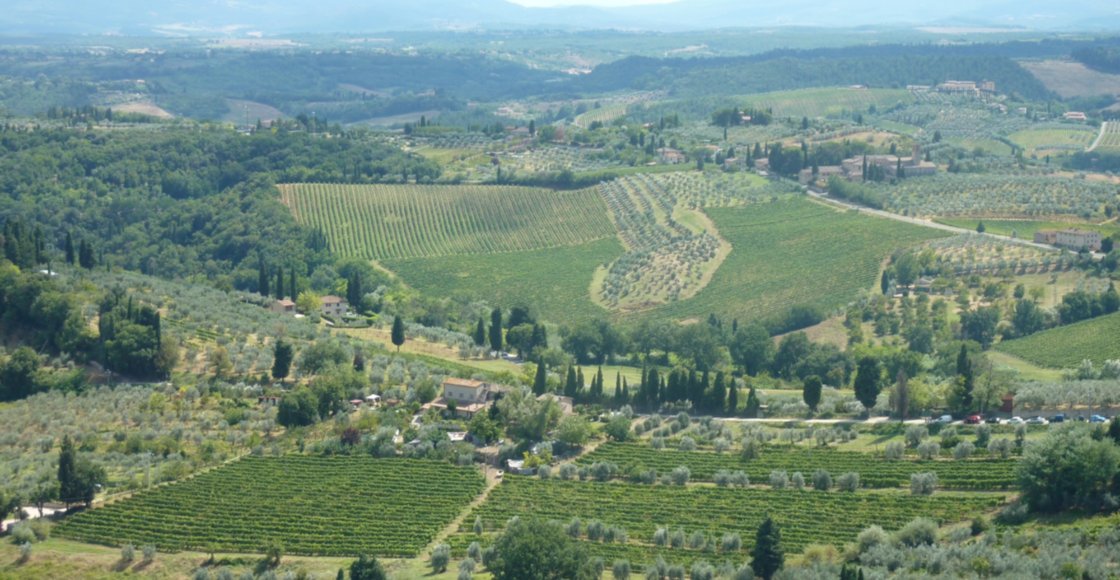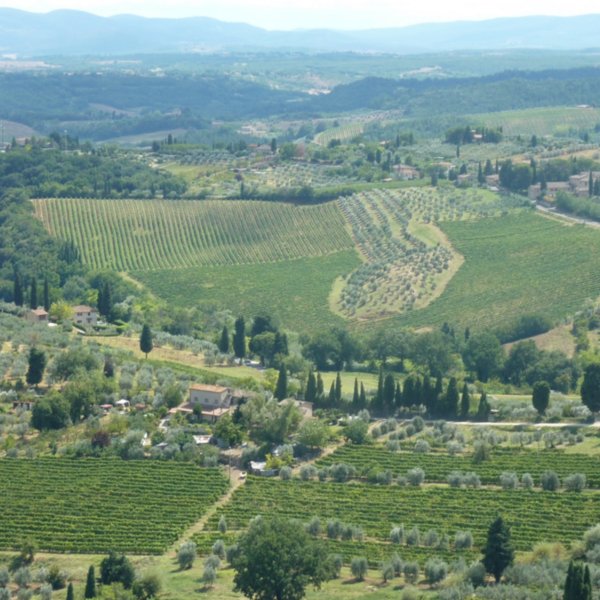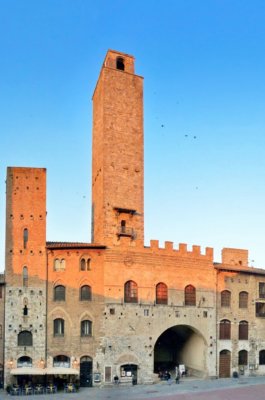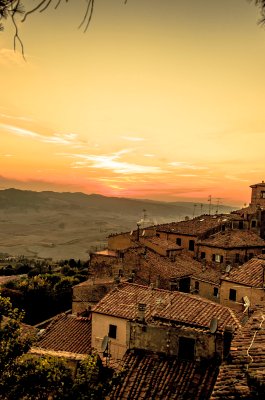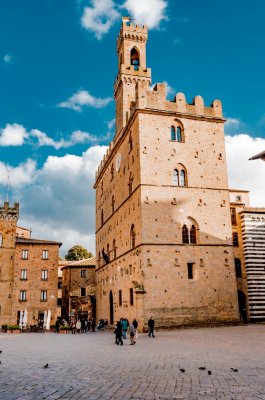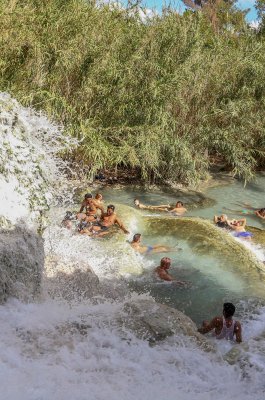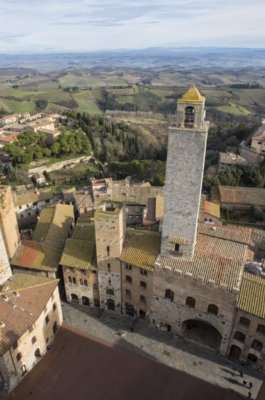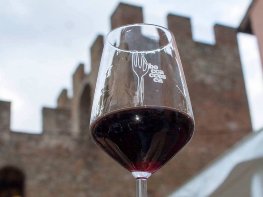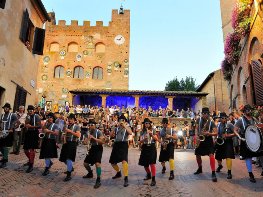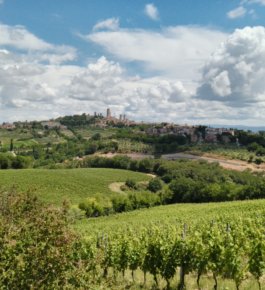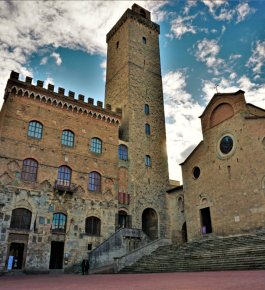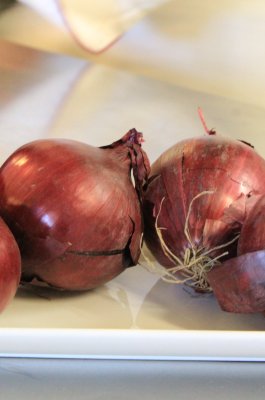A short but intense stage. 8.3 miles (13.3 kilometers) to be covered in an estimated time of 3 to 4 hours, along the ridges of the Val d’Elsa. Gravel roads and trails wind through vineyards, meadows and endless vistas. Nature takes center stage until about halfway along the route, when you’ll encounter the Sanctuary of Pancole, resplendent in the hilly landscape. From here, continue to the small hamlet of Collemucioli, with stretches of ancient medieval pavement, then to the splendid Pievedi Cellole, a Romanesque parish church nestled in the countryside.
Along the way, olive groves and rolling hills accompany you toward the imposing skyline of San Gimignano, the “Manhattan of the Middle Ages”, so called because of its soaring towers.
Water is available in Pancole, with there being no other refreshment points along the route.































